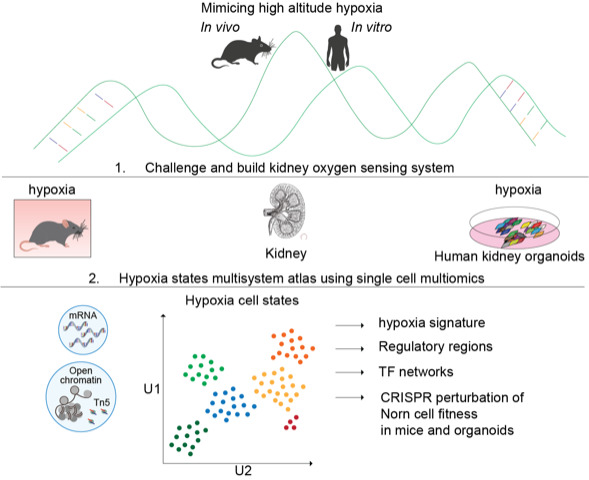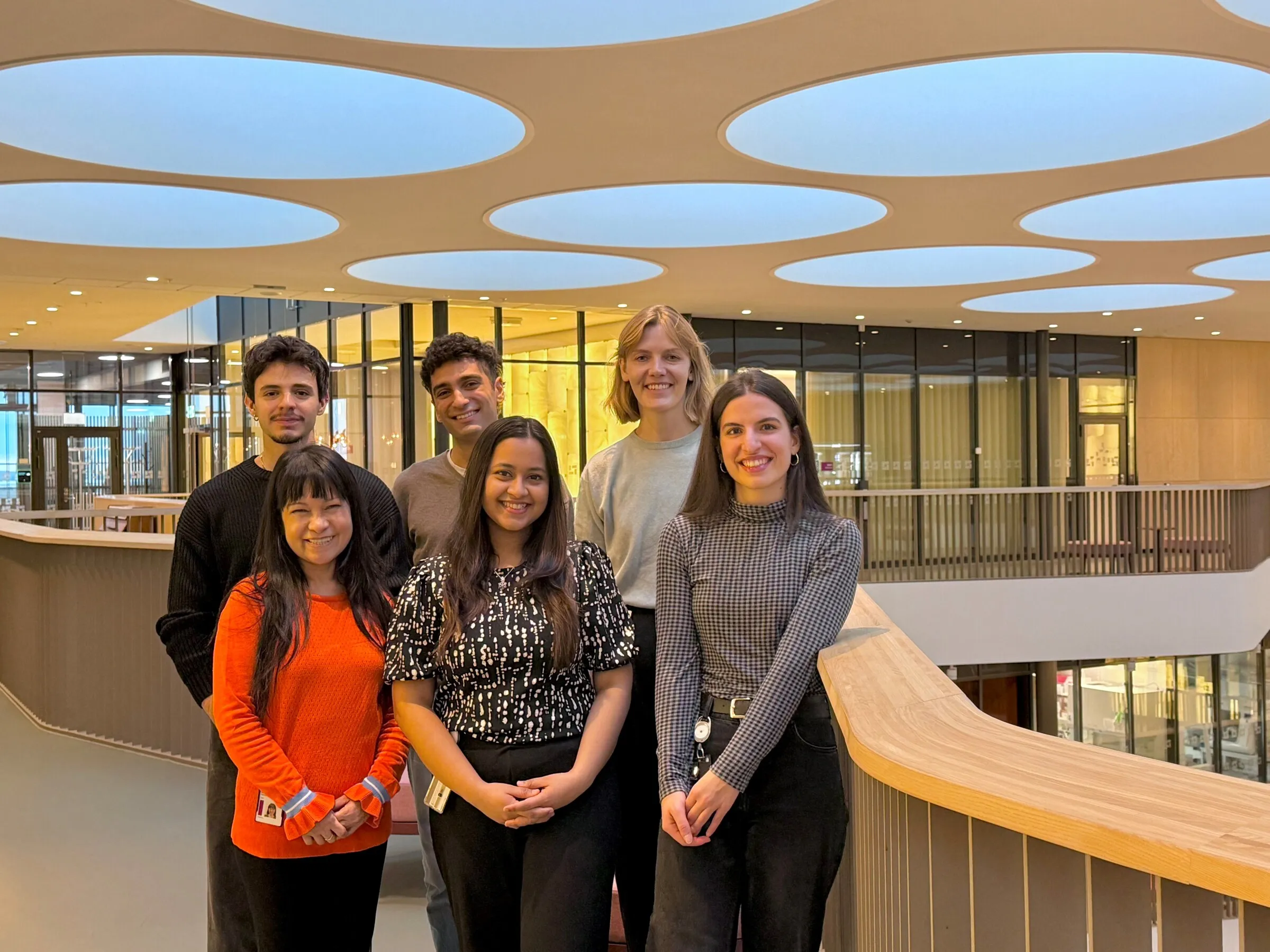Our research group is interested in using the lens of human evolution to link DNA variation to phenotypes to uncover fundamental molecular processes that govern cellular and systems functions. Our current focus is on the regulation of red blood cell production (erythropoiesis) and maintenance of oxygen homeostasis and investigating why some human populations have evolved to have an increased resistance (fitness) to hypoxic environments and what this can teach us about human health disparities (e.g. renal associated anemia). By deciphering underlying gene regulatory mechanisms such as the interplay between enhancer-promoter interactions and transcription factor code, we envision uncovering fundamental insight into regulatory principles of transcriptional hypoxia cell states identifying novel therapeutic targets, and developing personalized cellular therapies for medically related hypoxia. For this, we are developing multicellular human organoids and mouse models and employ cutting-edge single-cell multiomics and gene editing approaches.
Our research
Life-giving oxygen is fundamental to the function and survival of most life forms by sustaining essential biochemical reactions. In air-breathing organisms, oxygen is extracted from the air through the lungs where it binds to red blood cells (erythrocytes) that transport the oxygen to all cells and tissues in the body. Failure to meet the body’s unceasing demand for oxygen supply leads to hypoxia and can produce life-threatening events causing cell and tissue damage that can lead to severe disease and death. Strikingly, some human populations have evolved an increased resistance to hypoxic environments and are protected from detrimental consequences. A classic example is Tibetans who have lived at high altitude hypoxia for over 1000 generations. This low-oxygen environment poses extreme challenges to human physiology, yet Tibetans have genetically adapted and show increased fitness compared to non-adapted neighbors. Around 98% of variants under selection in Tibetans are non-coding, suggesting variants under selection alter the sequence of cis-regulatory elements to modulate target gene outputs to drive molecular, cellular, and system adaptation. Investigating this natural experiment can thus help us link DNA variation with cellular phenotypes and shed light on fundamental mechanisms regulating biological processes that control oxygen homeostasis.

Current objectives in the lab are:
1. Identify the molecular circuits underlying systemic oxygen homeostasis in hypoxia.
2. Decipher the molecular mechanism of human adaptation to high-altitude hypoxia.
To maintain systemic oxygen homeostasis, a few specialized systems exist throughout the body, for example, to increase the rate of red blood cell production (erythropoiesis) to increase the oxygen supply. Yet, the precise underlying molecular mechanisms of how these cellular systems sense and control oxygen homeostasis are unknown. In previous work (Kragesteen et al, Nature Medicine 2023), we discovered the molecular identity of kidney Norn cells that are central to detecting and responding to systemic hypoxia by producing erythropoietin (EPO) hormone that is a master regulator of erythropoiesis. By leveraging these findings, we aim to use both mouse models, and ex vivo cultures of human tissues to develop human erythropoietin-producing kidney organoids. This will serve as a testbed to reveal the molecular regulatory circuits and principles of oxygen sensing in a complex multicellular environment. Furthermore, we will explore how perturbation of Norn cells function is involved in renal-associated anemia.
We are open to exploring other tissues critical to oxygen homeostasis and additional types of human adaptations in recent history. For example, the drastic change in diet during the transition from hunter-gatherer to farmer and other traits; feel free to suggest your ideas.
Do you want to join our research group?
Curious and motivated people are always welcome to reach out! If you are interested and want to know more/join our mission, feel free to reach out to Bjort.katrinardottir.kragesteen@ki.se and on X @katrinardottir

